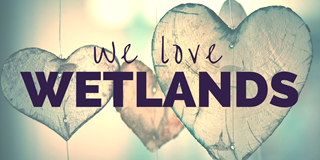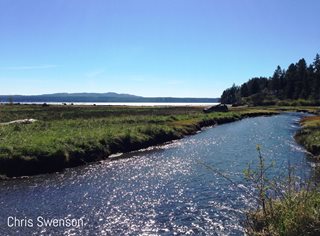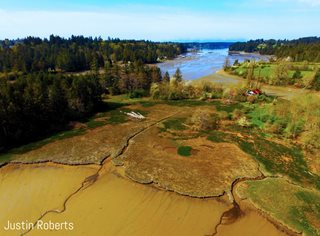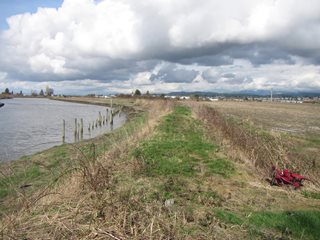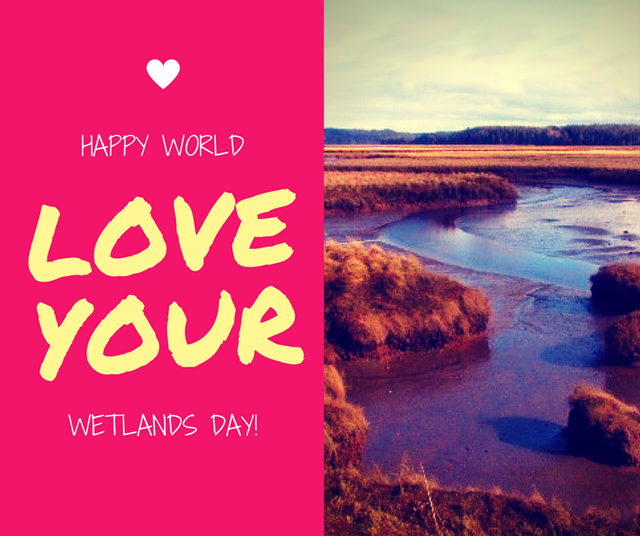Happy World Wetlands Day!
Over 2,500 acres of wetlands?! This makes our hear swell.
In the past decade, we've helped projects totaling almost $86 million conserve over ten thousand acres of our state's wetlands. Wetlands work hard to control flooding, clean the environment, provide habitat, recharge groundwater and do much more to benefit the ecosystem. We love them for it! With hundreds of thousands of acres of wetlands in the state, we've got a lot of love to spread around.
Barnum Point Acquisition
Protecting Barnum Point will preserve 67 acres of vital habitat in its estuaries and shoreline.
Location: Camano Island, Island County
Grant: $1,000,000
This project will acquire 67 acres of Puget Sound waterfront property on the east side of Camano Island. It protects one of the most important places in the Pacific Northwest for estuarine and nearshore habitat.
Situated in Port Susan Bay, within the greater Skagit and Stillaguamish Delta area, the biodiversity of this land plays a key role in the life of dozens of internationally important species that depend on its estuaries for survival.
Dosewallips Floodplain and Estuary Restoration
Growing Doeswallips State Park will make a healthier watershed and create better habitat for fish and wildlife.
Location: Dosewallips, Jefferson County
Grant: $402,117
Restoring five acres of tidally-influenced floodplain and enhancing 25 acres of salt marsh and mudflats at Dosewallips State Park will improve the natural functions of the ecosystem by reconnecting the main channel of the estuary to the salt marsh south of the river.
This will help create and maintain wetland habitats in the delta of the Dosewallips River by recreating the native network of water channels on the right bank of the river. By giving water the opportunity to flow and meander naturally, this project will improve habitat for wildlife and reduce the risk of flood damage to communities in the floodplain.
Grayland Acquisition Project
Protecting this threatened habitat in Grays Harbor will make a better horme for ducks and other wildlife alike.
Location: Hoquiam, Grays Harbor County
Grant: $1,000,000
Acquiring these 1,750 acres of diverse and threatened habitat will protect more than 1,100 acres of estuaries and marsh wetlands, tidal mudflats, old-growth forests and wet dunes and meadows. This ecosystem provides a vital haven for ducks, other water birds, fish, amphibians and marine wildlife.
Preserving this property amplifies the benefit of the existing conservation lands that surround it. In this way, it helps the positive impact on the environment of neighboring state and federal public lands like Grays Harbor National Wildlife Refuge, Johns River Wildlife Area, Bottle Beach and Graylands Beach state parks.
Lower Henderson Inlet Acquisition
This land purchase will protect 106 acres and restore wetlands of national importance to their natural state.
Location: Olympia, Thurston County
Grant: $800,000
Acquiring these two parcels totaling 106 acres will restore 23 acres of nationally declining marsh wetlands damaged by past agricultural use. This project will restore the natural function of the tideland by allowing water to move more freely throughout the wetland.
Restoring this land will prevent contamination to the water and soil, and stop the spread of invasive plants.
Zis a ba Estuary Restoration
Restoring these 88 acres of estuary will revive the floodplain by brining coastline and river together again.
Location: Stanwood, Snohomish County
Grant: $511,496
Restoring these 88 acres of coastal wetlands will reconnect the floodplain. The project area is currently isolated from the rise and fall of the tides by a dike that was built a long time ago to prevent flood damage. We've learned through experience, however, that a healthy floodplain is best for protecting lives, homes and property from flooding.
The project is designed to restore tidal and river influence by removing the majority of the current levee and building a setback levee to protect surrounding property owners. The restoration work and setback levee will improve habitat and water quality by allowing the estuary to function more naturally. By doing this, it will bring Puget Sound and the Stillaguamish river together again in this area.
Zylstra Lake Acquisition
Conserving these 541 acres protects a network of lakes, wetlands and riparian areas. It also lays the groundwork for future stream restoration.
Location: San Juan Island,
San Juan County
Grant: $1,000,000
Acquiring this land on San Juan Island will conserve over 541 acres. The project, which includes two lakes, approximately one mile of riparian stream and estuary shoreline, and almost three miles of Puget Sound shoreline, is located in the 11,464-acre False Bay watershed. The project will protect a network of lakes, wetlands and riparian areas. It will improve the ecosystem by reconnecting this network with the Salish Sea. In addition, this land purchase will protect water rights needed for future stream restoration projects.
Our work loving wetlands
At Ecology, we understand how important wetlands are for clean water, healthy wildlife, and a more pure Washington. Children and grandchildren deserve the same beautiful nature enjoyed today. By protecting the wetlands and conserving those which can be restored, we are making Washington great for generations to come.


